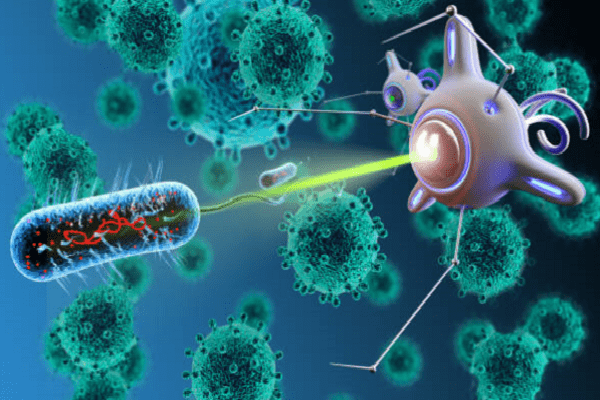General microbiology - viruses, bacteria, fungi >>>> Fighting bacteria - new methods
Fighting bacteria - new methods.

It's no secret that antibiotic therapy today can no longer solve all the problems with bacterial infection due to the widespread prevalence of bacteria resistant to most antimicrobial drugs.
Bacteria have learned to resist antibiotics, and scientists are actively looking for an answer to the question: "How can bacteria be hit?"
To find an effective way to bypass bacterial resistance, science looked closely at the methods that bacteria themselves use in their own struggle to survive in the environment of similar hostile microorganisms. It turned out that there is a kind of peptides (proteins) that bacteria use to destroy the cell membranes of their competitors - lantibiotics.
Lantibiotics (as scientists called them) are unusual protein (peptide) molecules with a peculiar structure that bacteria themselves use to dissolve the cell membrane of competitive bacteria.
Lantibiotics, accumulating on the cell membrane, target lipid molecules (conventionally called "lipid 2 molecules") - a structural protein of the cell membrane. The lantibiotic molecule identifies the desired lipid molecule, forms a compound with it and thus interferes with the lipid's function - maintaining the integrity of the membrane (bacterial cell wall). The bacterium dies, losing its protective membrane.
The working process of lantibiotics is not yet sufficiently substantiated from a scientific point of view, but it is already being effectively used in the food industry. The lantibiotic Nisin takes part in the disinfection of food, killing many types of pathogenic bacteria, and is used as an antiseptic additive in food. What is especially important - Nisin is harmful to bacteria, but absolutely harmless to humans.
It is believed that lantibiotics are promising studies, since they represent an effective antibacterial agent from the point of view of biochemistry - a means of fighting bacteria.

Read

Read



























